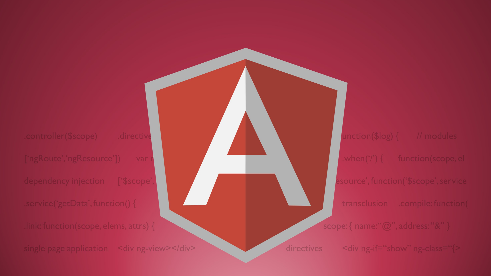The emergence of angularJS has created ripples in the ocean of opportunities where the developers are benefiting from the new services and features that this Javascript framework has managed to carry so gracefully. The AngularJS services have seen a wide acceptance due to its functions that have helped in shaping the application to the maximum convenience.

Pillars of AngularJS:
It is true that AngularJS is the cement that holds up all the bricks for constructing an authentic website. Directives, Controllers, Scopes, Services and Dependency Injection are the five main pillars of the AngularJS powered website.
Let us explore the 5 pillars of AngularJS in detail that firmly holds the success of an AngularJS powered website.
1. Directives:
Directives, one of the most powerful features of AngularJS framework. A developer should have an in-depth knowledge of the Directives as it is the engine that enables a safe and excellent drive. From the framework directives, you could use ng-model or ng-repeat to your own custom directives that grants you the permission to widen the vocabulary of the browser. The HTML elements, attributes and classes are all made to be reused with this distinct feature of the AngularJS.
2. Controllers:
Controllers are used to controlling the flow of data in the application powered by AngularJS. It is defined by a Javascript constructor function that maximizes the AngularJS scope. Controllers are used to set up the initial stage of the scope object as well as the behavior of the scope object.
3. Scopes:
A link between the view and the controller can be defined as Scope in terms of AngularJS. It can be defined as the application model that can be used to have a watch on expressions and propagate events. It contains the model data.
4. Services:
The AngularJS services enable the sharing of codes across all possible controllers in the code. They are all wired together using the Dependency Injection that is made suitable for the application. AngularJS has a wide range of services which can be used for increased functionality of the application. With an AngularJS module, an application developer can define services by registering the name and factory functions of the service.
5. Dependency Injection:
DI – known as Dependency Injection is spread throughout AngularJS to make developing an easy and fun filled process. It’s functions and designs are similar to a software, where the components are given their dependencies. This makes the client-side dependency management process quite easy and exciting. It not only helps in creating components but also provides them to other components and also resolves their dependencies.
Conclusion:
Without having an in-depth knowledge of Javascript you cannot have a hold on the AngularJs framework. Hence it becomes necessary to knwo the in and out of Javascript before plunging into its frameworks. Two- way data binding, easy to use, custom directives are some of the highlighting features that have paved way for the use of AngularJS services. The framework manages to stand firm on all the above-mentioned pillars which show a promising future that has the vision to grow and succeed.

